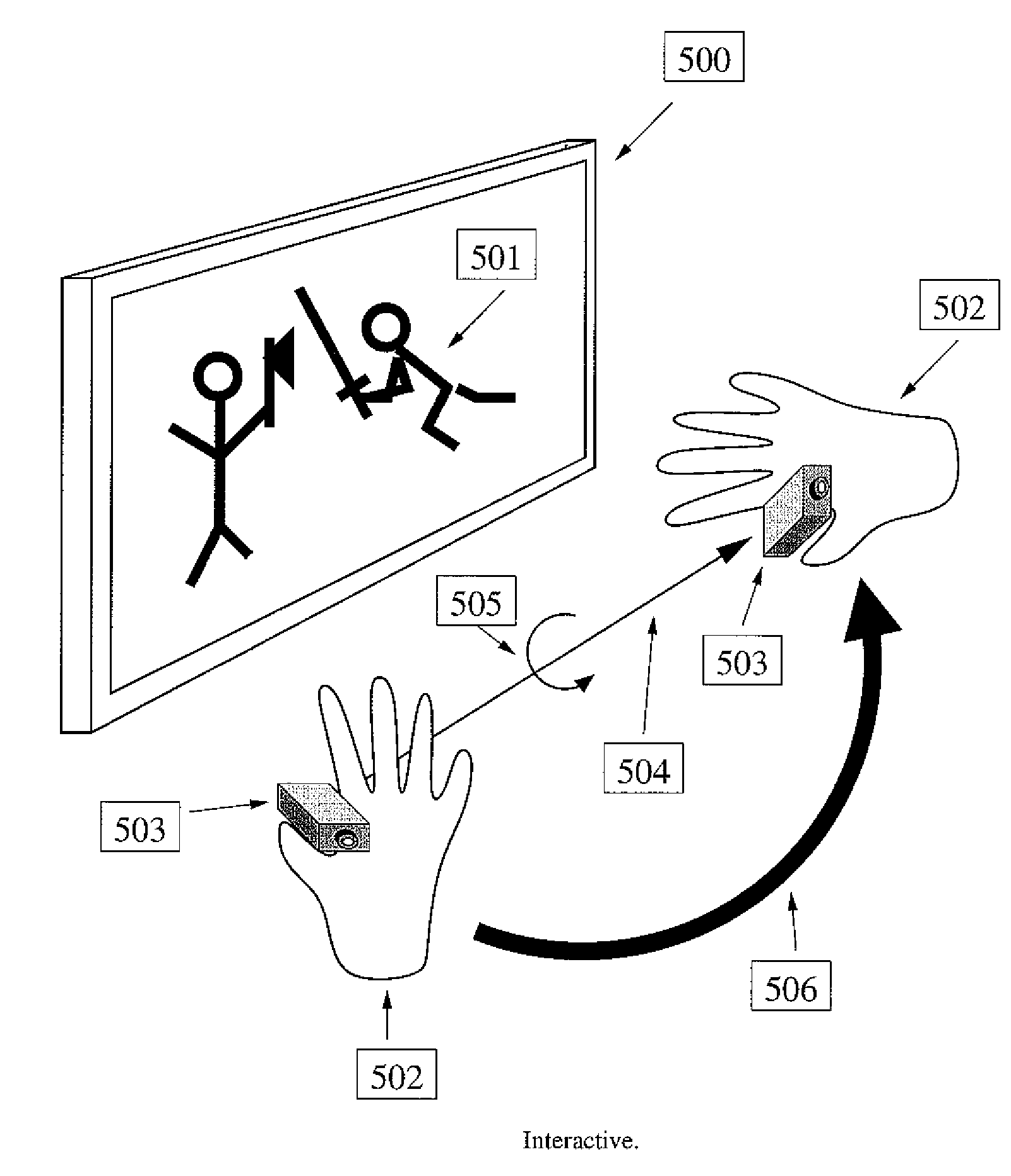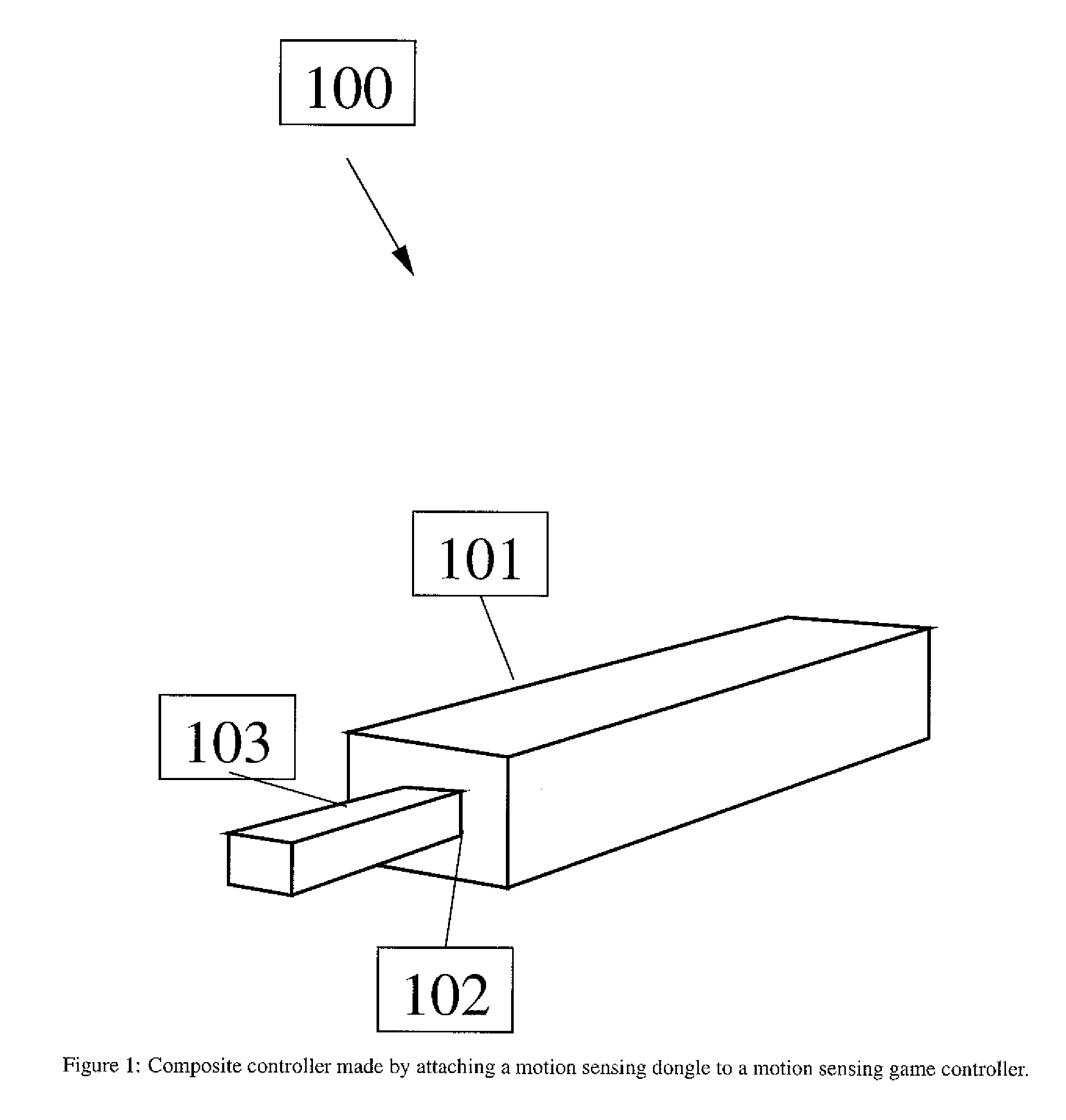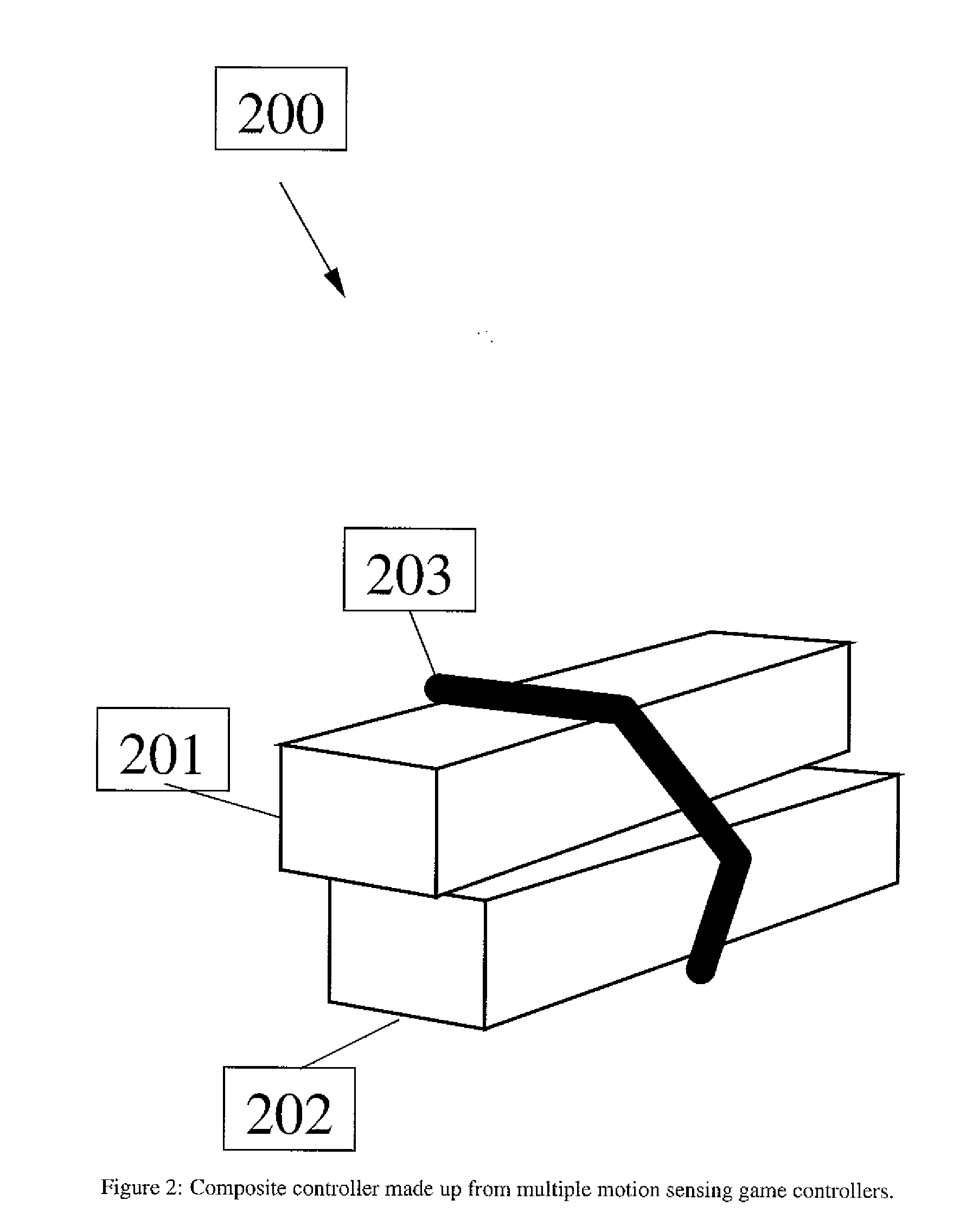Self-Contained Inertial Navigation System for Interactive Control Using Movable Controllers
a technology of inertial navigation and movable controller, which is applied in the field of self-contained inertial navigation systems (ins) for interactive control using movable controllers, can solve the problems of burdensome external signal source use, device dependent on light sources, and insufficient use of single tri-axial accelerometer to calculate all six degrees of freedom, etc., and achieve accurate determination of starting position and orientation
- Summary
- Abstract
- Description
- Claims
- Application Information
AI Technical Summary
Benefits of technology
Problems solved by technology
Method used
Image
Examples
Embodiment Construction
Definitions
[0035]In the description of the invention herein, above and hereinafter, the following definitions are offered to clarify the terminology used:
[0036]Self-contained inertial sensor: a device that requires no external signal sources to be placed in the environment for measuring acceleration of a moving body along one or more axes of the six possible linear and angular axes. Unless stated otherwise, the word sensor is understood to refer to a self-contained inertial sensor. For illustrative purposes, in this document, we describe instantiations using accelerometers and gyroscopes. However, those skilled in the art would immediately recognize that other devices could be used as self-contained inertial sensors. For example, a camera that compares images over time (such as the camera used in an optical mouse) could be used as a self-contained inertial sensor. But an infrared camera that is designed to work by tracking infrared sources or markers that have been deliberately plac...
PUM
 Login to View More
Login to View More Abstract
Description
Claims
Application Information
 Login to View More
Login to View More - R&D
- Intellectual Property
- Life Sciences
- Materials
- Tech Scout
- Unparalleled Data Quality
- Higher Quality Content
- 60% Fewer Hallucinations
Browse by: Latest US Patents, China's latest patents, Technical Efficacy Thesaurus, Application Domain, Technology Topic, Popular Technical Reports.
© 2025 PatSnap. All rights reserved.Legal|Privacy policy|Modern Slavery Act Transparency Statement|Sitemap|About US| Contact US: help@patsnap.com



